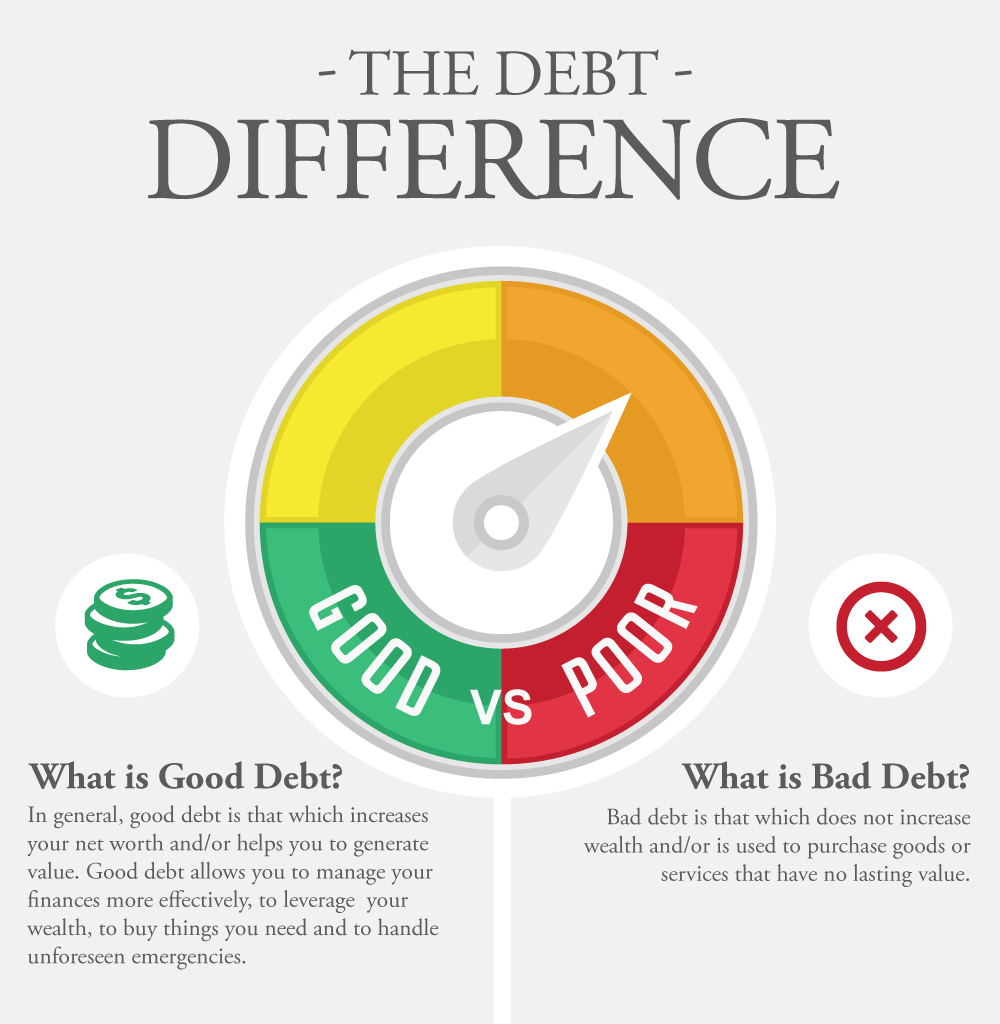Good debt allows you to manage your finances more effectively, to leverage your wealth, to buy things you need and to handle unforeseen emergencies. Examples of good debt are: taking out a mortgage, buying things that save you time and money, buying essential items, investing in yourself by borrowing for more education, or to consolidate debt. Each may put you in a hole initially, but you’ll be better off in the long run for having borrowed the money. A simple rule is: if it increases your net worth or has future value, it’s good debt.

Anything that decreases in value the minute after you buy it, is bad debt.
Unfortunately, that describes many of life’s necessities like clothes, vehicles, and that 60-inch flat-screen TV you ‘need’. If you can’t pay cash for them, you should at least consider settling for off-brand clothes and a large-screen TV. Unmanageable debt, for example, is credit card debt, motor vehicle debt, clothing accounts, buying furniture on credit, and salary advances.
Click here to view a video that explains the three characteristics of good vs. bad debt.